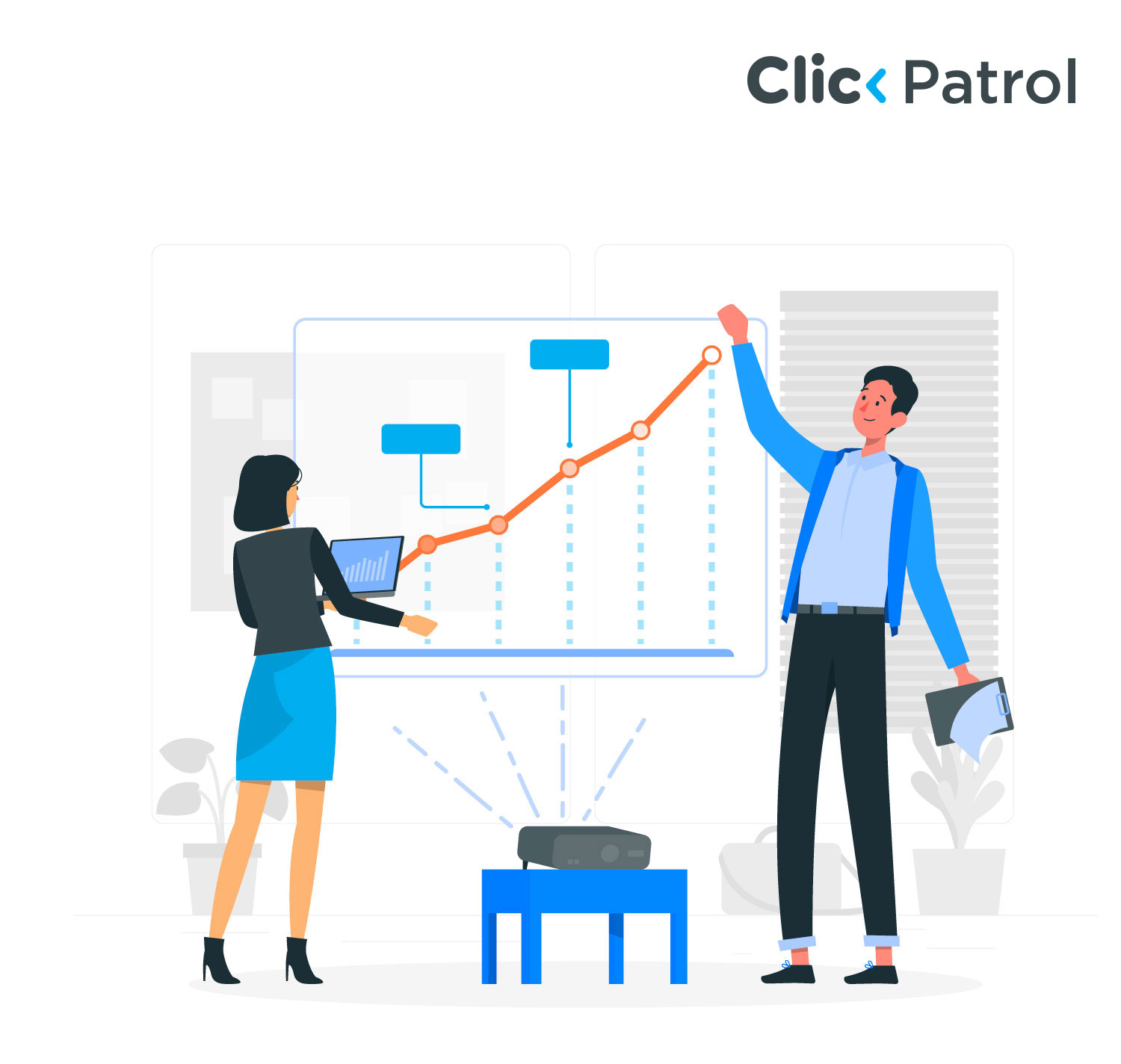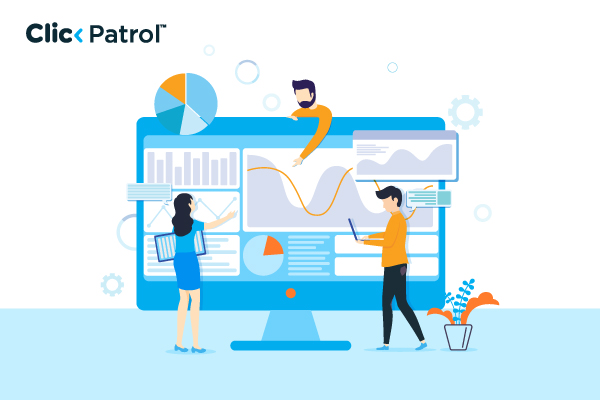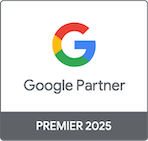The top issues include bad placements, such as MFA sites wasting 6.2% of spend; WFA, audience fragmentation from cookie loss affecting 25% of buys; and IVT, at 18.31% of impressions.
The most common ad targeting problems and their impact on performance metrics
Abisola Tanzako | Nov 14, 2025

Table of Contents
- Top 5 ad targeting problems hurting your CTR and ROI
- Ads appearing in bad placements
- Audience overlap and fragmentation
- Irrelevant or poorly segmented audiences
- Bot traffic and invalid clicks
- Brand safety and context mismatches
- How ad targeting problems damage CTR, CPA, and ROAS
- Click-through rates (CTR): The illusion of engagement
- Conversion rates
- Return on ad spend (ROAS)
- Cost per acquisition (CPA): Rising costs
- Brand lift and long-term impact: Reputational damage
- ClickPatrol’s solution: Real-time exclusion to fix ad targeting problems
- Best practices to mitigate ad targeting problems
- Protect your ad spend: Take control of targeting accuracy
Ad targeting problems have persistently plagued campaigns, resulting in wasted budgets and suboptimal performance.
Digital advertising expenditure globally reached $602 billion in 2023; however, a significant 22% of that amount is lost to ad fraud and invalid traffic.
Ad targeting problems from inaccurate audience segmentation to showing ads on low-quality placements will not only inflate costs but also erode key performance metrics such as click-through rate (CTR), conversion rate, and return on ad spend (ROAS).
This guide explains the most common ad targeting problems, from bad placements and bot traffic to irrelevant audiences and shows how they damage CTR, CPA, and ROAS.
You’ll also learn how ClickPatrol eliminates low-quality sites to help restore campaign efficiency.
Top 5 ad targeting problems hurting your CTR and ROI
Ad targeting problems manifest in different ways, but they all point to one thing: a gap between what a campaign aims to achieve and how it’s executed. Here are the main issues that quietly waste budget and reduce performance.
Ads appearing in bad placements
When ads show up on low-quality or unsafe websites, they lose credibility and waste spend. Programmatic advertising prioritises volume over quality, so ads often end up in the wrong places.
Audience overlap and fragmentation
Showing ads to the same people repeatedly across different platforms leads to fatigue and poor engagement. It also limits your ability to reach new audiences, reducing the overall impact of your campaigns.
Irrelevant or poorly segmented audiences
When audience data is outdated or too broad, ads reach people who aren’t interested. Poor segmentation leads to lower engagement and higher costs, as the message fails to align with the audience’s wants or needs.
Bot traffic and invalid clicks
Fake clicks from bots can make campaigns appear to perform well when they don’t. These false metrics waste ad spend and make it harder to measure real results or improve targeting accuracy.
Brand safety and context mismatches
Ads placed next to controversial or inappropriate content can damage a brand’s image. Even well-designed campaigns lose trust and effectiveness when they appear in the wrong context.
How ad targeting problems damage CTR, CPA, and ROAS
Ad targeting problems don’t just frustrate marketers; they directly impact performance and profit. Here’s how poor targeting weakens key campaign metrics.
Click-through rates (CTR): The illusion of engagement
Bad placements and irrelevant targeting make CTRs look higher than they really are. Bots inflate click counts, while genuine users scroll past ads on low-quality or unrelated sites.
Conversion rates
Even when clicks happen, conversions often don’t follow. When ads reach the wrong audience or appear where users are not paying attention, fewer people take action.
In many cases, a large part of the ad spend goes unseen or wasted on non-human traffic.
Return on ad spend (ROAS)
Poor placements and ad fraud quietly drain returns. Money spent on irrelevant impressions or fraudulent clicks reduces the actual value per dollar invested. Campaigns may look active, but real results shrink.
Cost per acquisition (CPA): Rising costs
Irrelevant targeting increases costs because the wrong people are clicking, not converting.
As audience tracking becomes less precise, marketers spend more to get the same results, raising CPA and reducing overall efficiency.
Brand lift and long-term impact: Reputational damage
Beyond immediate metrics, poor targeting harms brand perception. Ads showing up in unsafe or unsuitable environments weaken trust and reduce long-term loyalty.
In contrast, well-placed ads in quality spaces build recognition and credibility over time.
ClickPatrol’s solution: Real-time exclusion to fix ad targeting problems
ClickPatrol’s mission is to restore transparency in digital advertising. Our platform addresses ad targeting problems at their core by eliminating low-quality and irrelevant placements.
Excluding low-quality and irrelevant placements: How it works
ClickPatrol’s core strength lies in real-time placement verification. Using advanced scanning technology, we block ads from MFA sites, fraudulent domains, and brand-unsafe environments before they are served.
Unlike traditional tools that act after impressions, our proactive exclusion ensures ads appear only on reputable sites, such as premium publishers with verified, human audiences.
ClickPatrol integrates easily through API or tag management. You can set custom rules for domain whitelisting, content categories, fraud thresholds, and more, giving you full control over where your ads appear.
Best practices to mitigate ad targeting problems
While ClickPatrol does the heavy lifting, proactive strategies amplify results:
- Audit placements quarterly: Utilize tools to map spend distribution; strive for less than 5% on non-premium inventory.
- Leverage first-party data: First-party data should be your focus post-cookie for segmentation, as NielsenIQ shows 55% are uncomfortable with heavy AI targeting.
- Incorporate attention metrics: From volume to quality; CTV has 2x attention versus display.
- Test contextual targeting: 54.8% of advertisers are unfamiliar with it, so start small; eMarketer predicts a 20% uplift.
- Monitor fraud benchmarks: Track against Global Rates: 18.31% invalid impressions.
Protect your ad spend: Take control of targeting accuracy
Ad targeting issues like poor placements are not just obstacles; they are silent budget leaks.
With ad fraud losses projected to reach $170 billion by 2028 (Juniper Research), and vital metrics like ROAS taking the hit, ignoring these problems is no longer an option.
When ads appear on irrelevant or unsafe sites, they not only waste money but also damage credibility and distort performance data.
Every misplaced impression chips away at campaign trust, and every fake click weakens your ability to measure what truly works.
ClickPatrol brings precision back into focus. By automatically blocking low-quality sites and filtering out fraud in real time, it helps you recover lost ROI, improve targeting accuracy, and protect your brand reputation where it matters most: in front of real people.
Frequently Asked Questions
-
What are the most common ad-targeting problems in 2025?
-
How do bad ad placements impact ROAS?
They erode trust, reducing ROAS, as 67% of consumers are turned off by unsafe contexts, amounting to $71.37 billion in annual global losses.
-
Can ClickPatrol fix all ad targeting problems?
We excel at removing low-quality placements and can save end-users up to 45% on fraud, but pair us with first-party data to offer full-spectrum optimization.
-
What's the prevalence of ad fraud in CTV?
In Q2 2024, $1.14 billion was lost to IVT, according to Statista, with 19.4% of pros citing vulnerability as a factor.






